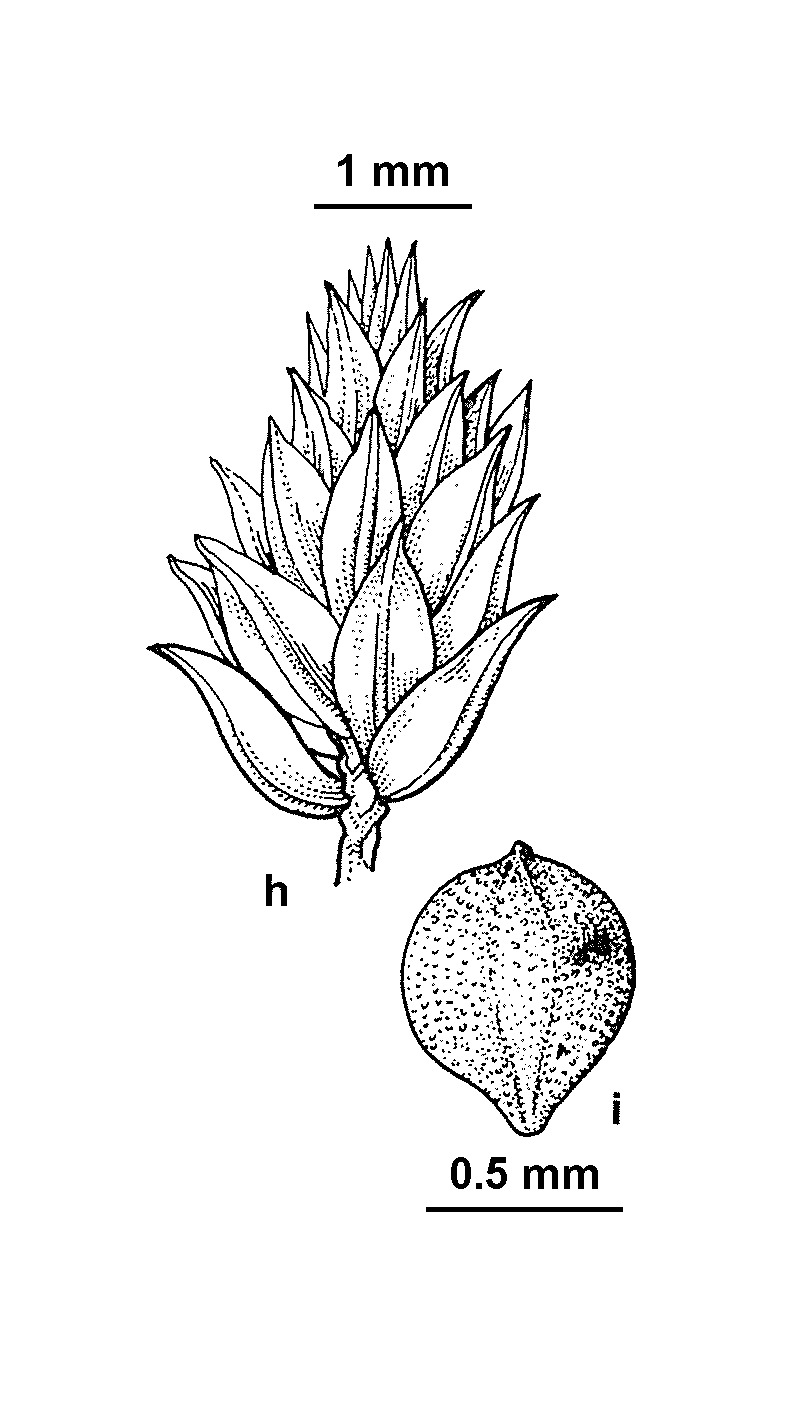Isolepis victoriensis
(N.A.Wakef.) K.L.WilsonSmall tufted annual. Culms filiform, to 15 cm high. Leaf-blades to 2 cm long. Spikelets 2–4 per inflorescence, 2–5 mm long; involucral bract erect to spreading, to 11 mm long, usually equalling or shortly exceeding inflorescence; glumes acute, scarcely mucronate, with sides hyaline (rarely with red-brown patches) with 1 nerve close to keel, 1.1–1.6 mm long; stamen 1; style 3-fid. Nut ± equally trigonous, obovoid to broad-obovoid, minutely reticulate-papillose, glistening, white with underlying red-brown to blackish, c. one-third as long as glume, 0.4–0.6 mm long, 0.3–0.4 mm diam. Flowers spring.
LoM, MuM, Wim, GleP, VVP, VRiv, MuF, GipP, OtP, Gold, CVU, GGr, DunT, NIS, HNF. Also NSW,. Scattered and apparently rather rare in Victoria, occurring chiefly on heavier soils on floodplains of the Murray River and its major tributaries, but with isolated occurrences near Dimboola (type area), near Edenhope, Creswick and Werribee.
Isolepis australiensis is superficially similar to I. sepulcralis, but differs by its smaller glumes.
Wilson, K.L. (1994). Cyperaceae. In: Walsh, N.G.; Entwisle, T.J., Flora of Victoria Vol. 2, Ferns and Allied Plants, Conifers and Monocotyledons, pp. 238–356. Inkata Press, Melbourne.
 Spinning
Spinning
